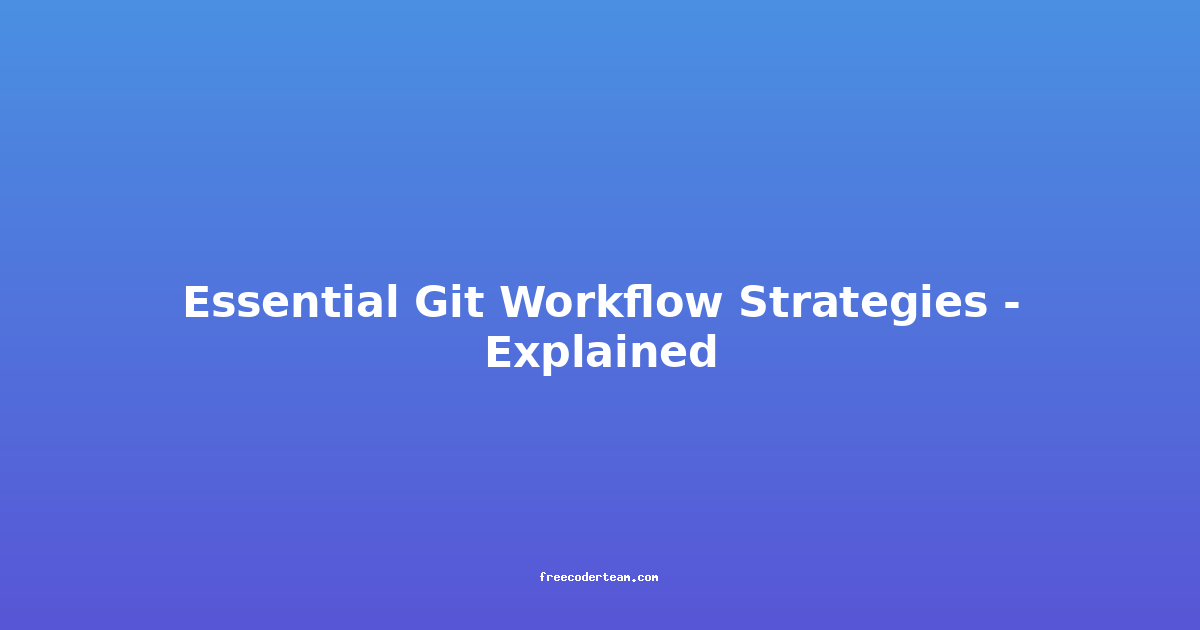Mastering the Art of Web Development: 7 Advanced Strategies Every Developer Needs to Know
Web development is a dynamic field that continues to evolve at a rapid pace. As a developer, staying ahead of the curve requires not only technical expertise but also a deep understanding of best practices and advanced strategies. In this blog post, we’ll explore seven advanced strategies that every web developer should know to build robust, scalable, and maintainable applications. Whether you’re a seasoned developer or just starting out, these strategies will help you elevate your skills and deliver high-quality web solutions.
1. Embrace Modern Frontend Frameworks and Libraries
Modern frontend frameworks like React, Angular, and Vue.js have revolutionized web development by providing powerful tools for building dynamic and interactive user interfaces. These frameworks offer component-based architecture, which makes it easier to manage complex UIs and maintain codebases.
Why Use Modern Frameworks?
- Reusability: Components allow you to reuse UI elements across your application.
- Performance: Frameworks like React use virtual DOM to optimize rendering.
- Community Support: Large communities provide extensive documentation and libraries.
Practical Example: Building a Simple Todo App with React
import React, { useState } from 'react';
function TodoApp() {
const [todos, setTodos] = useState([]);
const [input, setInput] = useState('');
const addTodo = () => {
if (input.trim() !== '') {
setTodos([...todos, input]);
setInput('');
}
};
const removeTodo = (index) => {
const updatedTodos = todos.filter((_, i) => i !== index);
setTodos(updatedTodos);
};
return (
<div>
<h1>Todo App</h1>
<input
type="text"
value={input}
onChange={(e) => setInput(e.target.value)}
placeholder="Add a todo"
/>
<button onClick={addTodo}>Add</button>
<ul>
{todos.map((todo, index) => (
<li key={index}>
{todo}{' '}
<button onClick={() => removeTodo(index)}>Remove</button>
</li>
))}
</ul>
</div>
);
}
export default TodoApp;
This example demonstrates how React’s state management and component-based approach can simplify building interactive applications.
2. Leverage RESTful APIs and GraphQL for Backend Development
RESTful APIs and GraphQL are two popular approaches for building backend services. REST is widely adopted for its simplicity, while GraphQL offers more flexibility by allowing clients to request exactly the data they need.
REST vs. GraphQL
- REST: Uses HTTP methods (GET, POST, PUT, DELETE) and resources.
- GraphQL: Allows clients to define the exact data they need in a single request.
Practical Example: Building a RESTful API with Node.js and Express
const express = require('express');
const app = express();
const port = 3000;
// Sample data
const todos = [
{ id: 1, text: 'Learn React', completed: false },
{ id: 2, text: 'Build a Todo App', completed: false },
];
// Middleware to parse JSON
app.use(express.json());
// GET all todos
app.get('/todos', (req, res) => {
res.json(todos);
});
// POST a new todo
app.post('/todos', (req, res) => {
const newTodo = {
id: todos.length + 1,
text: req.body.text,
completed: false,
};
todos.push(newTodo);
res.status(201).json(newTodo);
});
// Start the server
app.listen(port, () => {
console.log(`Server running on http://localhost:${port}`);
});
This example shows how to create a simple RESTful API using Node.js and Express.
3. Implement Microservices Architecture
Microservices architecture involves breaking down an application into smaller, independent services that communicate with each other. This approach enhances scalability, maintainability, and fault isolation.
Benefits of Microservices
- Scalability: Each service can be scaled independently.
- Technology Flexibility: Different services can use different technologies.
- Fault Isolation: A failure in one service doesn’t affect others.
Practical Example: Microservices with Docker and Kubernetes
Using Docker, you can containerize each microservice, and Kubernetes can orchestrate them. For example, you might have a user-service and an order-service.
# Dockerfile for user-service
FROM node:16
WORKDIR /app
COPY . .
RUN npm install
CMD ["npm", "start"]
# Kubernetes Deployment YAML
apiVersion: apps/v1
kind: Deployment
metadata:
name: user-service
spec:
replicas: 3
selector:
matchLabels:
app: user-service
template:
metadata:
labels:
app: user-service
spec:
containers:
- name: user-service
image: your-docker-repo/user-service:latest
ports:
- containerPort: 3000
This example demonstrates how to containerize and deploy a microservice using Docker and Kubernetes.
4. Optimize for Performance and Security
Performance and security are critical aspects of web development. Optimizing your application ensures a better user experience, while securing it protects sensitive data.
Performance Optimization Techniques
- Minify and Bundle Assets: Use tools like Webpack or Rollup.
- Lazy Loading: Load resources only when needed.
- Caching: Implement browser and server-side caching.
Security Best Practices
- Use HTTPS: Encrypt data in transit.
- Input Validation: Prevent injection attacks.
- Use Secure Headers: Implement Content Security Policy (CSP).
Practical Example: Optimizing with Webpack
// webpack.config.js
const path = require('path');
module.exports = {
entry: './src/index.js',
output: {
filename: 'bundle.js',
path: path.resolve(__dirname, 'dist'),
},
module: {
rules: [
{
test: /\.js$/,
exclude: /node_modules/,
use: {
loader: 'babel-loader',
options: {
presets: ['@babel/preset-env'],
},
},
},
],
},
};
This Webpack configuration helps bundle and minify your JavaScript code for better performance.
5. Master Version Control with Git
Version control is essential for managing code changes, collaborating with teams, and maintaining a history of your project. Git is the most popular version control system, and mastering it is crucial for any developer.
Key Git Commands
git init: Initialize a new Git repository.git add: Add files to the staging area.git commit: Commit changes with a message.git push: Push changes to a remote repository.
Practical Example: Collaborating with Git
# Initialize a new repository
git init
# Add files to staging
git add .
# Commit changes
git commit -m "Initial commit"
# Push to remote repository
git push origin main
This example shows how to set up and push changes to a Git repository.
6. Implement Continuous Integration/Continuous Deployment (CI/CD)
CI/CD pipelines automate the process of building, testing, and deploying your application. This ensures that your code is always in a deployable state and reduces the risk of errors.
Benefits of CI/CD
- Automated Testing: Run tests automatically on code changes.
- Faster Deployments: Reduce time to deploy new features.
- Consistency: Ensure consistent builds and deployments.
Practical Example: CI/CD with GitHub Actions
# .github/workflows/nodejs.yml
name: Node.js CI
on:
push:
branches: [ main ]
pull_request:
branches: [ main ]
jobs:
build:
runs-on: ubuntu-latest
strategy:
matrix:
node-version: [14.x, 16.x]
steps:
- uses: actions/checkout@v2
- name: Use Node.js ${{ matrix.node-version }}
uses: actions/setup-node@v2
with:
node-version: ${{ matrix.node-version }}
- run: npm install
- run: npm test
This GitHub Actions workflow automates the build and test process for a Node.js project.
7. Focus on User Experience (UX) and Accessibility
A great user experience is what sets exceptional web applications apart. Paying attention to UX and accessibility ensures that your application is not only functional but also intuitive and inclusive.
UX Best Practices
- Responsive Design: Ensure your app works well on all devices.
- Consistent Navigation: Keep navigation simple and intuitive.
- Feedback: Provide clear feedback to users.
Accessibility Tips
- Semantic HTML: Use semantic tags for better screen reader support.
- Alt Text: Provide alt text for images.
- Keyboard Navigation: Ensure all features are accessible via keyboard.
Practical Example: Semantic HTML for Accessibility
<!DOCTYPE html>
<html lang="en">
<head>
<meta




